When you hear someone mention “200 acres,” what comes to mind? For most people, acres are just numbers on a land deed or a unit mentioned in farming news. But 200 acres is much larger than most of us can easily imagine.
To put it into perspective, it’s a land area that has shaped history, built thriving communities, and continues to play a role in agriculture, real estate, and conservation. Whether you’re planning to buy land, curious about farming capacity, or just want a better visual understanding, comparing acres to familiar spaces can make this measurement easier to grasp.
How Big is 200 Acres?
One acre equals 43,560 square feet. That means 200 acres is a massive 8,712,000 square feet, or roughly 0.31 square miles. In simpler terms, it’s equivalent to more than 150 football fields laid side by side.
Understanding this size helps in agriculture, real estate investments, and even in appreciating just how much open land exists around us. Let’s explore seven practical comparisons to help you truly visualize the vastness of 200 acres.
1. 200 Acres vs. Football Fields
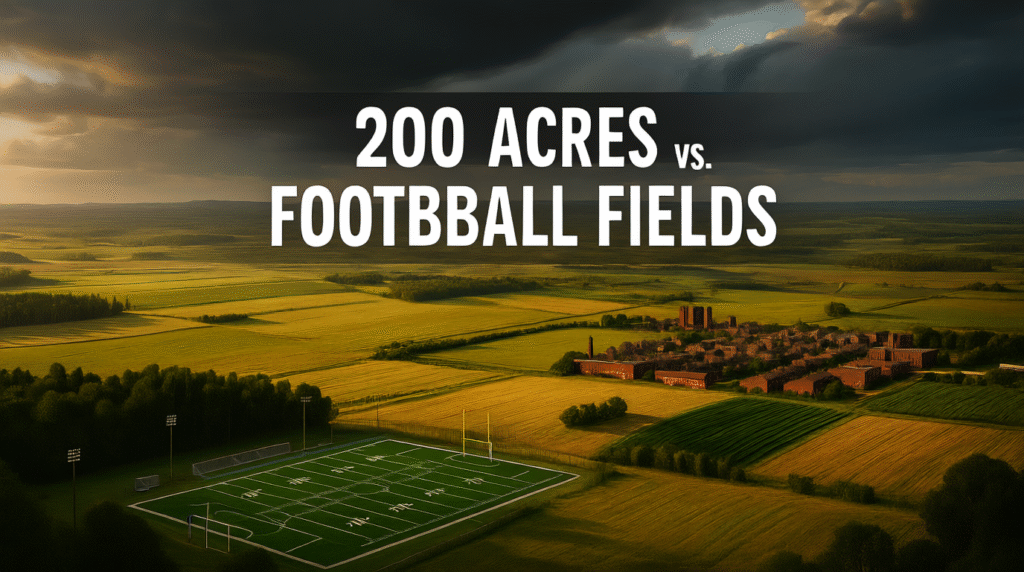
Football fields are one of the most common benchmarks for land size. A standard American football field, including the end zones, measures about 1.32 acres. That means 200 acres is nearly the same as 151 full football fields.
Imagine standing at one end of a stadium and then multiplying that view by over a hundred it gives a jaw-dropping sense of space. This comparison is especially useful for sports fans or anyone who has ever attended a football game. Interestingly, early football fields weren’t standardized until the early 20th century, which means land measurements like acres were critical in setting consistent field sizes.
2. 200 Acres Compared to Central Park in New York City
Central Park is one of the most iconic green spaces in the world, covering about 843 acres. By comparison, 200 acres is just under one-fourth of its total area.
Picture walking from the southern edge of Central Park to about 25% of the way up that’s how far 200 acres would extend. This visualization makes it easier for city dwellers who know Central Park to appreciate how significant a 200-acre property can be. Interestingly, Central Park itself was designed in the mid-19th century as an escape from urban sprawl, showcasing how a few hundred acres of land can transform an entire city’s lifestyle.
3. 200 Acres as a Farming Operation
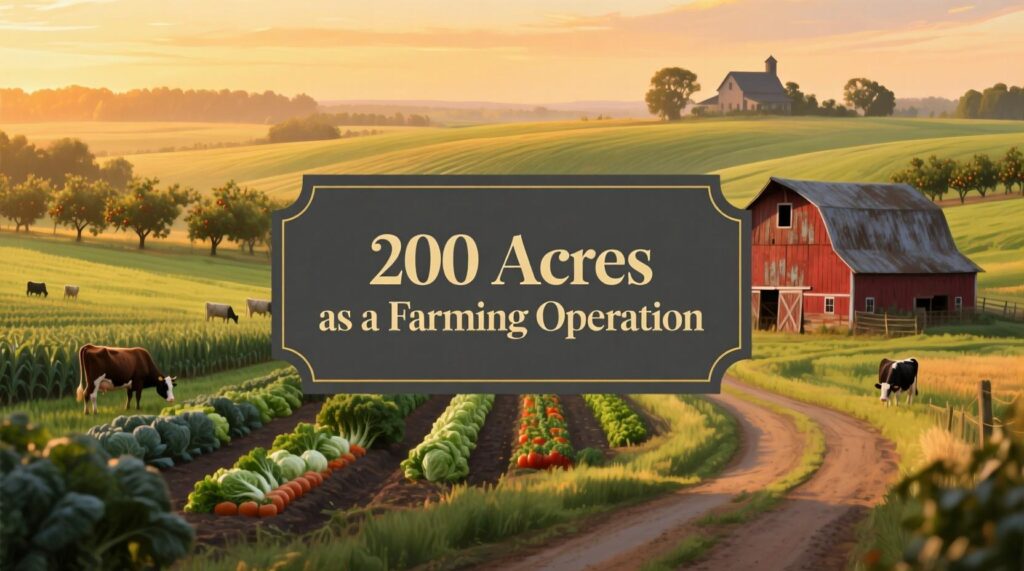
In the world of agriculture, 200 acres is a meaningful amount of land. For a family farm, this could support a combination of crops, livestock, or orchards. For instance, an acre can produce about 15,000 pounds of potatoes in one growing season, so 200 acres could theoretically yield three million pounds of potatoes.
Of course, most farms diversify, but the comparison shows the scale of food production such land can sustain. Historically, the Homestead Act of 1862 in the United States granted settlers 160 acres of land, which was considered enough to support a family. At 200 acres, you’d actually have more than the average homesteader received to build a livelihood.
4. 200 Acres Compared to a Square Mil
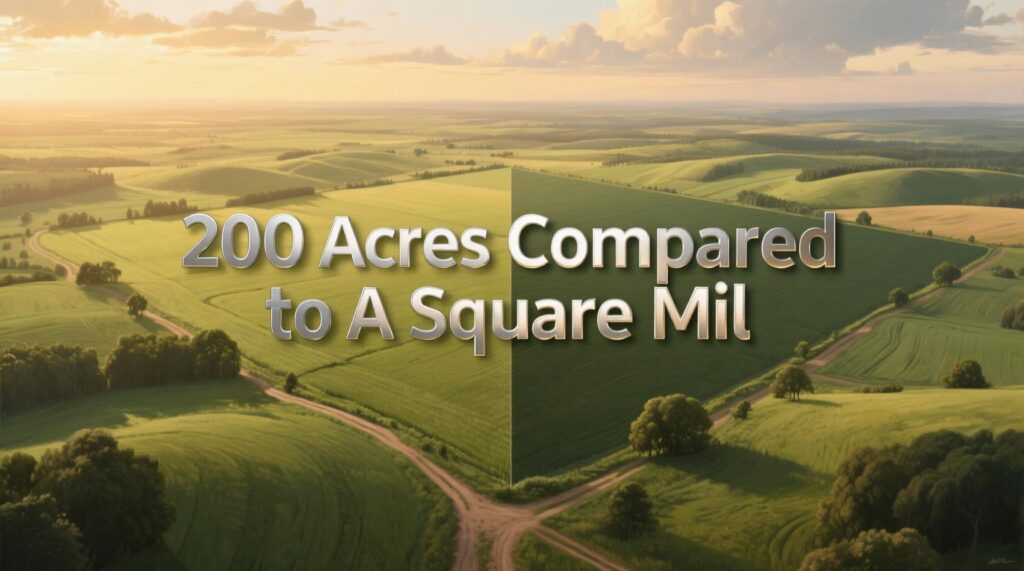
A square mile equals 640 acres, so 200 acres is just under one-third of a square mile. If you walked the perimeter of a square mile, you’d cover four miles in distance. For 200 acres, that perimeter would be around 2.3 miles.
This comparison is useful for hikers or runners who want to imagine how much distance a 200-acre property covers. A fun way to think about it: running a lap around 200 acres is like completing a solid workout loop in a nature reserve.
5. 200 Acres vs. Shopping Malls

Large shopping malls give people a sense of size because they’re places most of us have experienced. The Mall of America in Minnesota, one of the biggest malls in the U.S., covers about 96 acres when including its parking lots. That means 200 acres is more than double the size of this mega-mall.
Imagine two Mall of Americas side by side, filled with endless shops, entertainment, and parking areas—that’s the scale of 200 acres. Fun fact: if you spent just 10 minutes in each of the mall’s stores, it would take you almost three full days to visit them all. Doubling that area emphasizes just how expansive 200 acres is.
6. 200 Acres Compared to Theme Parks

Disneyland Park in California is about 85 acres, while the entire Disneyland Resort is roughly 500 acres. A 200-acre space would be large enough to hold more than two Disneylands, yet still smaller than the entire resort.
Theme parks provide an excellent comparison because they’re immersive experiences that take hours, if not days, to explore. Envisioning two Disneylands packed into 200 acres helps highlight the recreational potential of such a property. Historically, Walt Disney’s vision for Disneyland was to create a space much larger than typical amusement parks of the 1950s, proving that even 85 acres could spark a cultural phenomenon.
7. 200 Acres as Residential Development
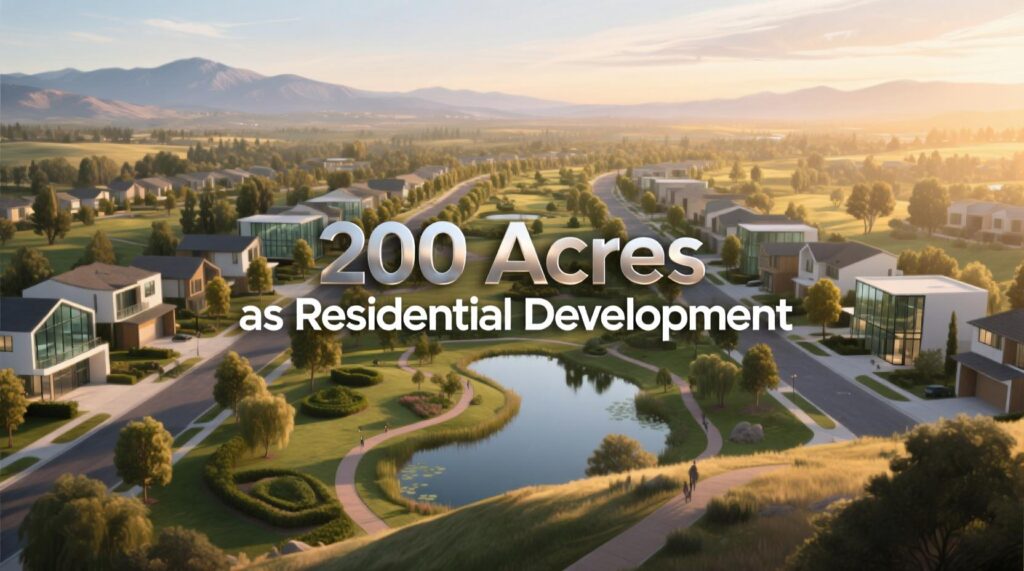
In real estate, 200 acres can transform into a sizable neighborhood. A typical suburban home, along with its yard, streets, and shared spaces, requires around a quarter of an acre. By that math, 200 acres could comfortably accommodate about 800 homes.
To put that into perspective, an entire small town or a new housing community could be built on 200 acres. Developers often use such measurements to plan schools, parks, and infrastructure, showing how land of this size can support hundreds of families. In fact, many modern master-planned communities start with 200–500 acres, shaping lifestyles for generations.
8. 200 Acres Compared to the Pentagon
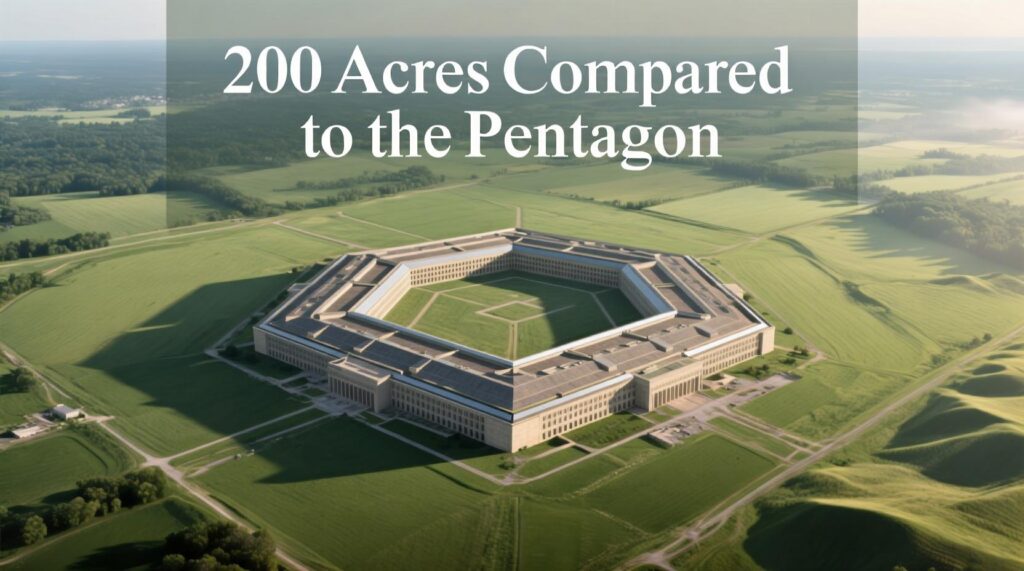
The Pentagon, the headquarters of the U.S. Department of Defense, covers about 583 acres including its grounds. A 200-acre area is roughly one-third the size of the entire Pentagon property. That’s still vast enough to house large government facilities, sprawling parking lots, or extensive office complexes.
9. 200 Acres Compared to College Campuses
Many well-known universities are built on land ranging from 100 to 500 acres. For example, Harvard University’s main campus in Cambridge spans about 209 acres. This means 200 acres is nearly the size of one of the most prestigious educational institutions in the world.
A property of that scale could hold dozens of academic buildings, sports fields, libraries, and housing. Colleges use their land not just for classrooms but for culture, community, and innovation, which shows how versatile 200 acres can be.
10. 200 Acres as Vineyards or Wineries
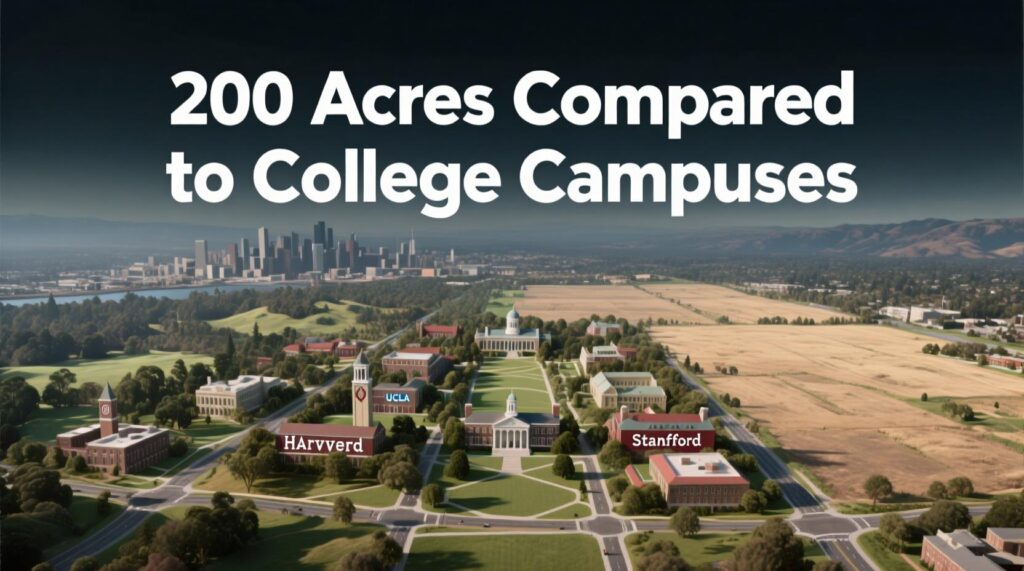
Wine enthusiasts often appreciate land in terms of vineyard size. A single acre can produce around 3–5 tons of grapes depending on the soil and climate. With 200 acres, a vineyard could yield up to 1,000 tons of grapes in a season, which translates into hundreds of thousands of bottles of wine.
Famous wine regions like Napa Valley or Bordeaux often feature vineyards ranging between 100 and 500 acres. A 200-acre vineyard could support a thriving winery with tasting rooms, storage facilities, and even small resorts.
11. 200 Acres Compared to Airports
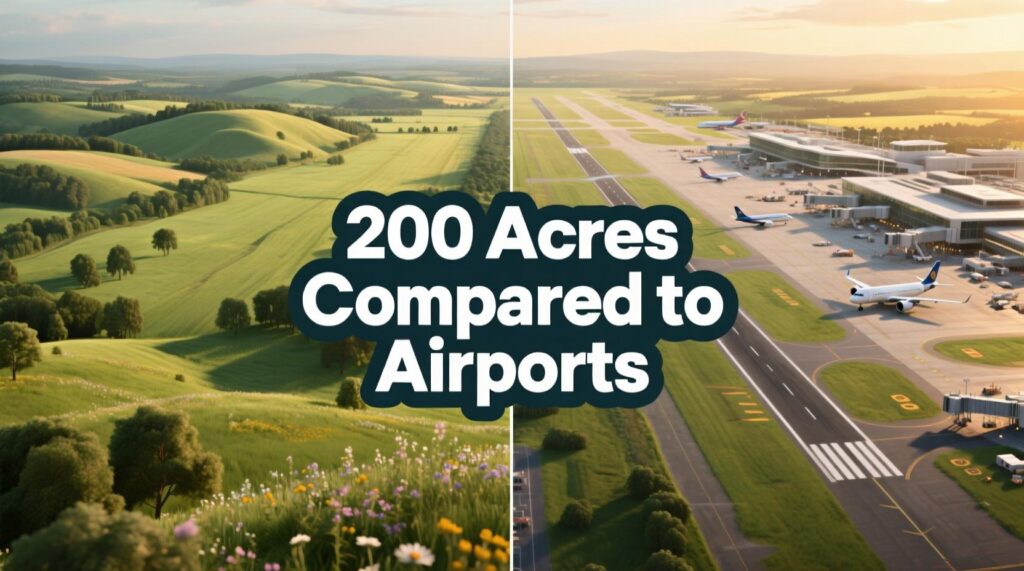
Airports are another practical reference point. A small regional airport usually requires about 200 acres to accommodate a runway, terminal, and support facilities. That means a 200-acre plot could essentially serve as the foundation for an entire local airport.
To give perspective, John F. Kennedy International Airport in New York spans more than 4,900 acres, but smaller airports around the U.S. fit comfortably within a 200-acre footprint. Aviation history shows that early airports started on much smaller land areas, but this size still represents a significant hub for travel and commerce.
12. 200 Acres as Golf Courses

Golf courses are an ideal comparison because they often take up large tracts of land. An average 18-hole golf course covers about 150 to 200 acres. That means a 200-acre plot could host a full championship-level course complete with fairways, greens, and a clubhouse. For golf lovers, it’s easy to imagine spending hours walking across this much land.
Fun fact: The Augusta National Golf Club, home to The Masters Tournament, is about 365 acres nearly twice the size of 200 acres.
13. 200 Acres Compared to Zoos
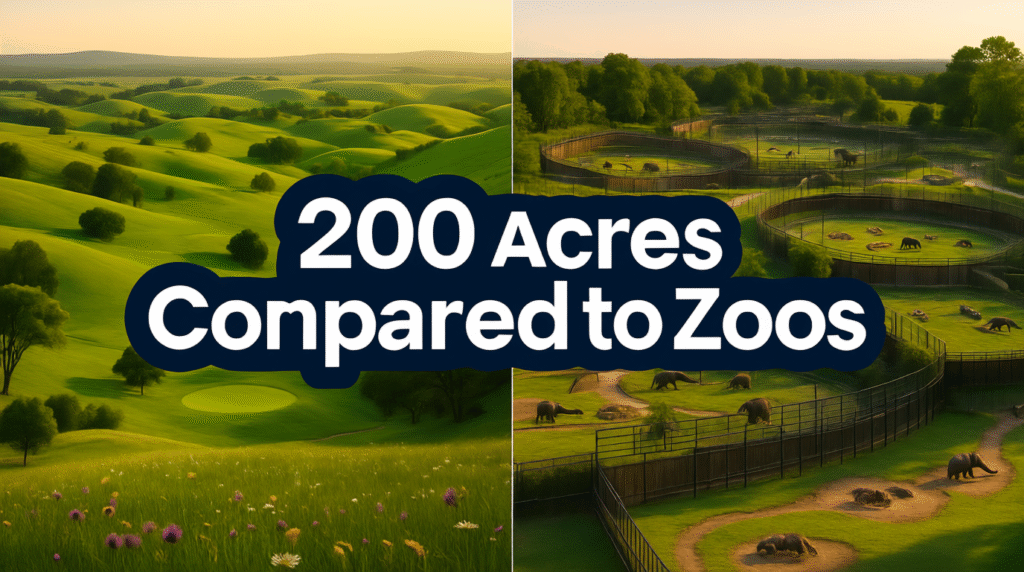
Large zoos are designed to provide natural habitats for hundreds of animal species, and many span between 150 and 250 acres. The Smithsonian National Zoo in Washington, D.C., for instance, sits on about 163 acres. That makes 200 acres just a bit larger, enough space to host countless exhibits, botanical gardens, and conservation areas.
Imagine an entire zoo with room to expand into safari-like spaces—that’s the potential of a 200-acre property. Modern zoos use their land not only for animals but also for research and education, underscoring the importance of such an area.
14. 200 Acres as Solar Farms
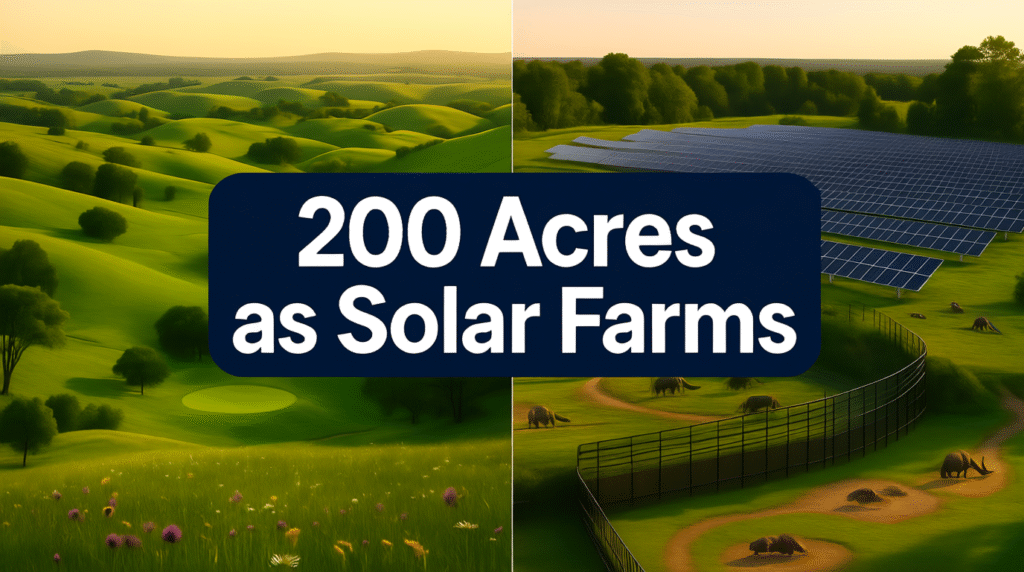
Renewable energy projects are often measured in acres, and 200 acres is a prime size for a solar farm. On average, 1 acre can generate about 0.35 megawatts of electricity with solar panels. That means 200 acres could produce around 70 megawatts—enough to power tens of thousands of homes annually.
With the world shifting toward sustainable energy, a 200-acre solar farm would represent a meaningful step toward green infrastructure. Interestingly, some of the largest solar farms in the world cover thousands of acres, but even 200 acres can make a massive environmental impact.
How to Visualize 200 Acres in Daily Life
For most of us, 200 acres isn’t something we encounter every day. But there are ways to estimate its size without pulling out a calculator. If you know a football field or a city block, you can use those as references. A typical city block in the U.S. is about 2 to 5 acres, which means 200 acres equals around 40 to 100 city blocks.
Another trick is walking distance. A brisk walk covers about 3 miles per hour, and circling the perimeter of a 200-acre square would take roughly 45 minutes. So, if you’ve ever taken a long walk around your neighborhood, you can imagine the time it would take to stroll around a 200-acre property.
Conclusion
Now that you know how big 200 acres is, the number feels less abstract and more tangible. From football fields and Central Park to farms, shopping malls, and even Disneylands, we’ve seen how this vast space compares to everyday landmarks.
Understanding acreage isn’t just for farmers or real estate investors—it’s practical knowledge for anyone interested in land, community planning, or even history. The next time someone mentions acres, you’ll have a clearer picture of what that truly means.
Here’s a fun challenge: step outside and look around your neighborhood. Try to imagine how 200 acres would fit into your world. Whether you picture it as hundreds of homes, endless farmland, or a giant theme park, one thing is certain—200 acres is impressively vast.

James Harrington is a writer known for his compelling storytelling and diverse themes. His work blends creativity with thought-provoking ideas, captivating readers across genres. Through his website, DimensionsGo.com, he shares his latest projects, insights, and literary reflections, building a global community of readers and writers.



